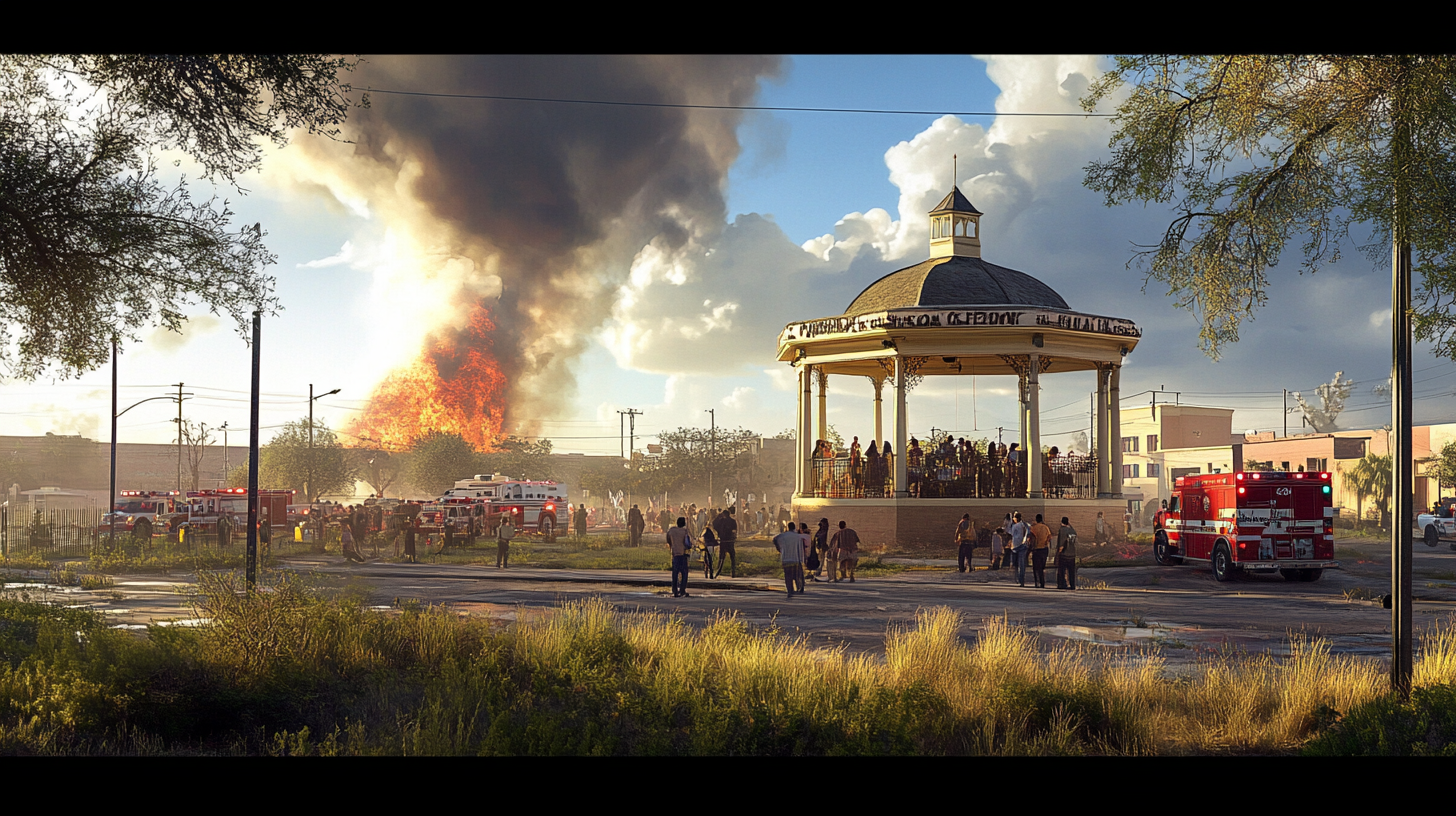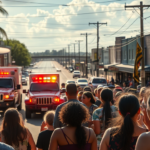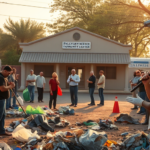Grass Fire in Brownsville Burns Over 100 Acres as Winds Intensify
A significant grass fire tore through Brownsville, Texas, over the weekend, scorching more than 100 acres in its path. Strong winds reaching up to 58 miles per hour exacerbated the blaze, posing significant challenges to firefighting efforts and raising concerns over future fire risks in the region.
The Blaze and Response Efforts
The fire ignited near New Carmen Avenue and FM 1732, just south of Rancho Viejo, an area that has remained largely rural despite growth in other parts of the city. The Brownsville Fire Department swiftly deployed approximately eight to ten units to battle the flames, aiming to minimize the fire’s impact on nearby structures. Fortunately, no injuries or damage to buildings were reported.
Assistant Chief Sam Padilla of the Brownsville Fire Department noted the fire’s intensity was heightened by the severe winds. “One of the reasons we deployed as many units as we did is because of the high winds. We wanted to make sure that we created a barrier between the fire and the structures,” Padilla stated. Authorities are still investigating the cause of the fire, but wind conditions undoubtedly played a significant role in its rapid spread.
Windy Conditions: A Growing Concern
Fire officials were not alone in observing the effect of wind on firefighting efforts. Gus Lopez, a meteorologist with the National Weather Service in Brownsville, commented on the unusual intensity and frequency of winds in the area during this time of year. “We’re seeing winds that are more commonly associated with spring patterns,” said Lopez. “It’s becoming increasingly important for RGV residents to understand how rapidly conditions can change, especially during peak fire seasons.”
In recent weeks, the Rio Grande Valley has experienced fluctuating weather patterns, notably cooler temperatures in the 50s giving way to unexpectedly warmer, windy conditions over the weekend. These shifts could pose future challenges for fire prevention and management strategies across the Valley.
Community Reaction and Preparedness
Andrea Castillo, a Brownsville resident living minutes from the fire’s site, recounted the tense atmosphere as the fire raged on. “We’ve had dry conditions and lots of wind, so even though firefighters did an amazing job, it was very worrying seeing the flames get that close,” she remarked.
The fire serves as a stern reminder of the importance of preparedness and awareness among Valley residents. Local officials encourage residents to stay informed about weather conditions and heed warnings issued by fire departments, especially those living in rural or less-developed areas prone to fire risks.
Future Implications and Resilience
Reflecting on the response to this fire, city officials in Brownsville are evaluating how best to bolster resources for future incidents. This includes potential infrastructure investments and increased public awareness campaigns that emphasize fire safety and preventive measures.
Moreover, the local government aims to work collaboratively with state agencies and environmental experts to assess conditions contributing to fire risks. Such proactive measures highlight a broader intention to safeguard communities and address environmental challenges head-on.
While the weekend fire in Brownsville is now under control, it has wider implications for the Valley’s approach to community safety and risk management. The event underscores the necessity of increased vigilance as weather conditions grow more unpredictable. Community leaders and residents alike must remain committed to enhancing local impact through thoughtful, informed action, solidifying the RGV’s reputation as a region dedicated to resilience and recovery.
Residents and business owners are encouraged to contact their local fire department for further advice on fire safety practices and to report concerns about potential fire hazards in their vicinity. By fostering a culture of awareness and preparedness, the Rio Grande Valley community can better navigate natural events that challenge its safety and determine its adaptability.







